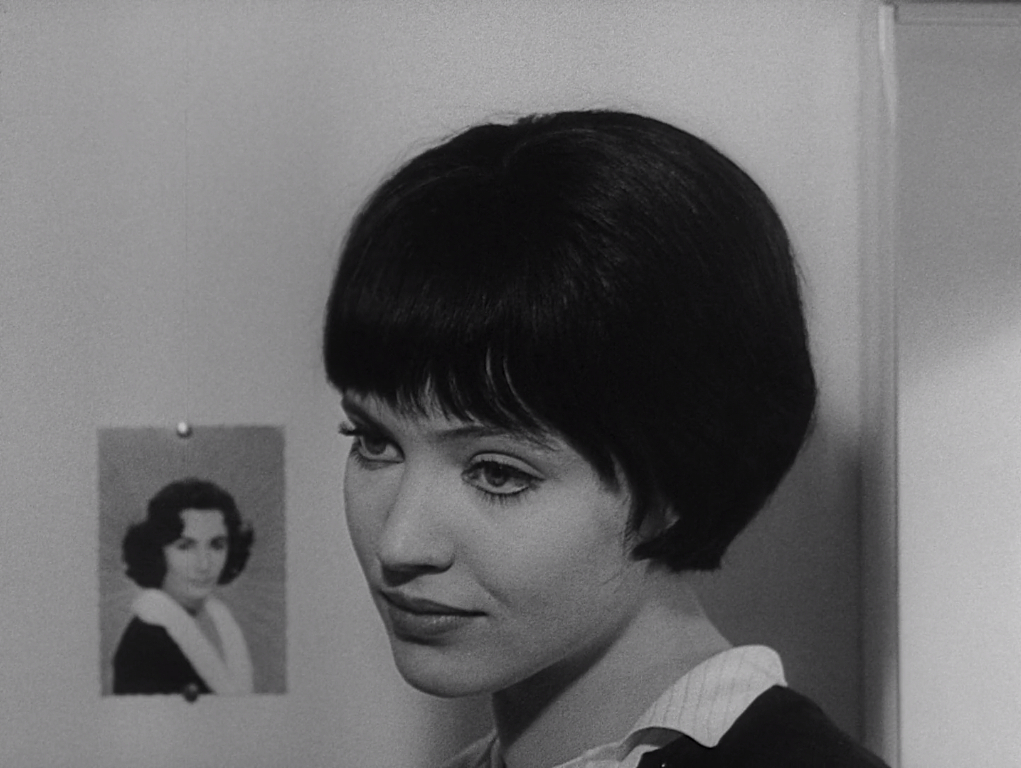
Vivre sa vie
1962, directed by Jean-Luc Godard
Vivre sa vie opens with four shots of Nana: left profile, frontal view, right profile, and the back of her head at a bistro. These shots almost trace a circle around her, except that the last shot is more distant, stretching the circle into… what? The answer comes in the final vignette, in a reading of Edgar Allan Poe’s “The Oval Portrait”. Vivre sa vie is a portrait of Nana in twelve tableaux, like the hours of a clock (again a round image) as if counting down her remaining hours of life.
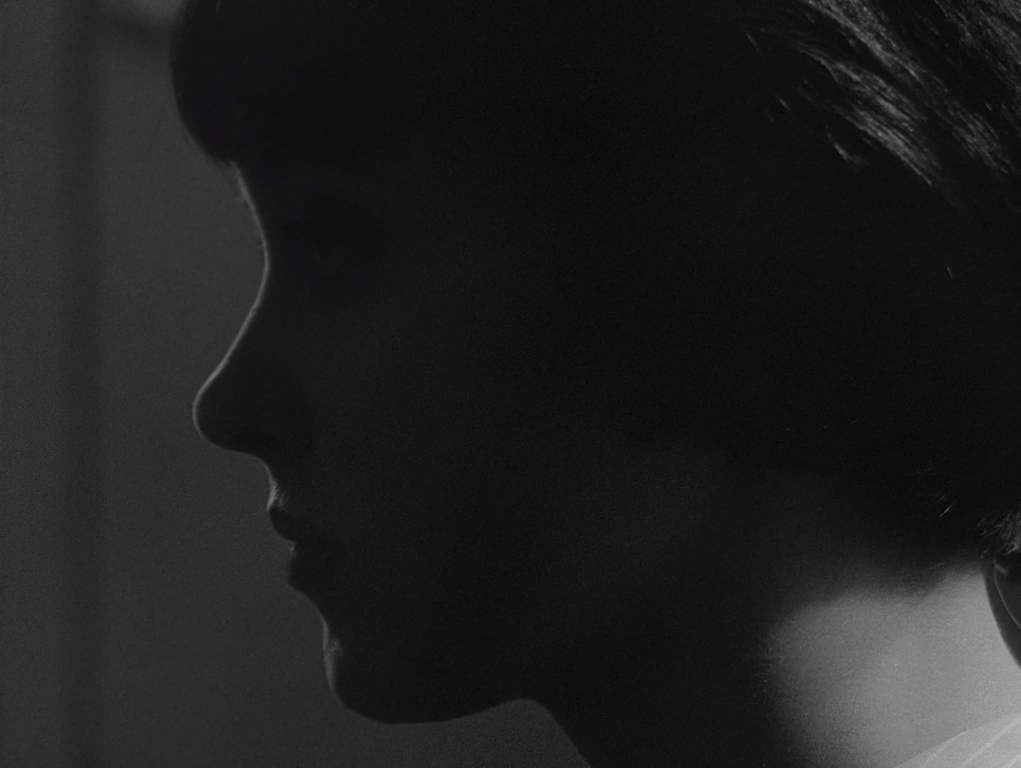
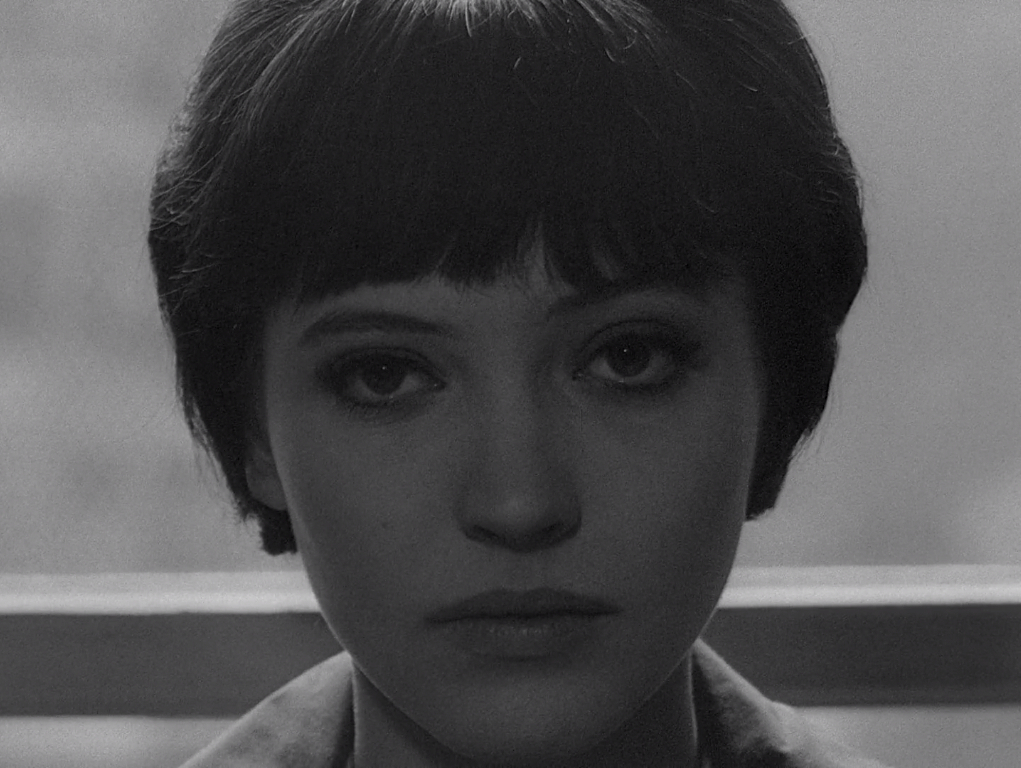
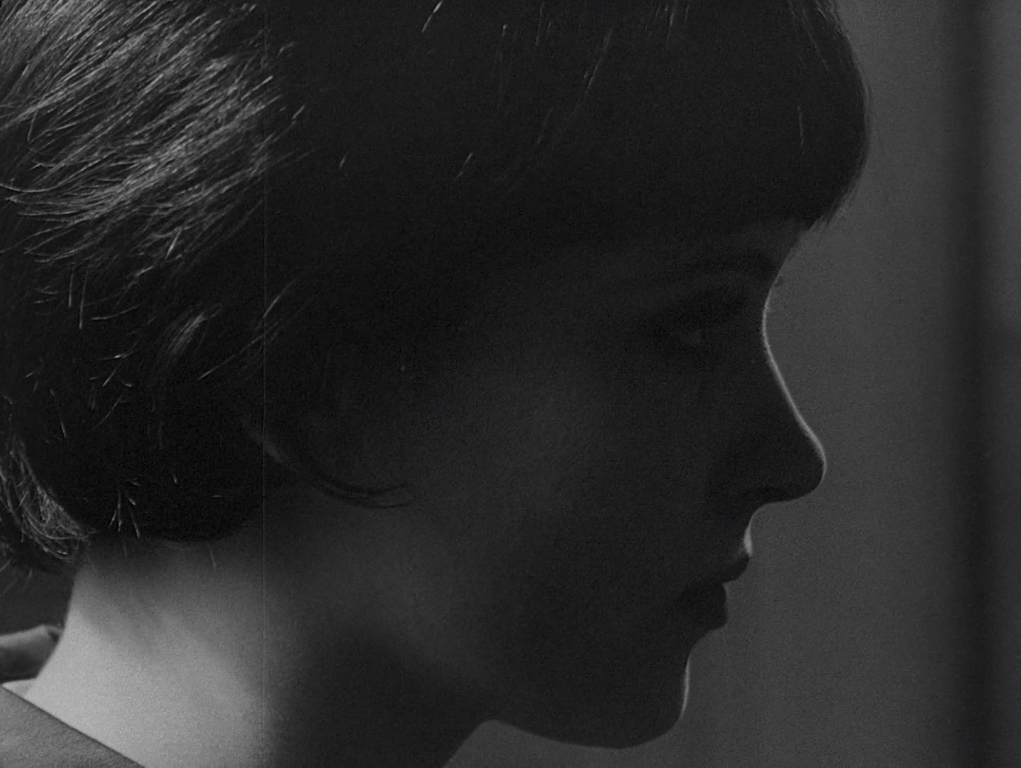
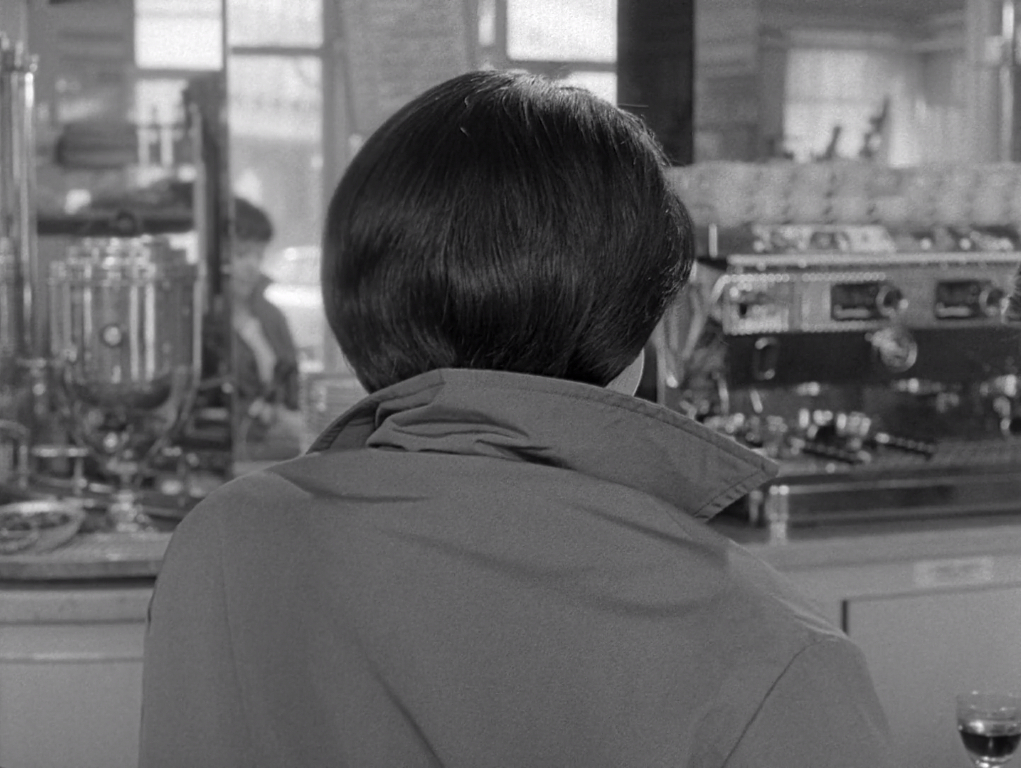
“The Oval Portrait” tells of an artist who painted his wife. As the painting became more and more lifelike, its living subject wasted away, and with the final brushstroke the painter breathlessly exclaimed, “This indeed is life itself!” at the moment his wife expired beside him. Through some uncanny process, the life in her person gradually bled onto the oval canvas.
The parallels to Vivre sa vie are inescapable. Godard cast his wife Anna Karina in the lead role, and the name “Nana” is a double reference to the real actress behind her: it’s an anagram of “Anna”, and it borrows the final syllables from both “Anna” and “Karina”. When Nana watches The Passion of Joan of Arc, not only does the story foreshadow her martyrdom, it’s also the work of a Danish director working in France, as Karina was a Danish actress working in France. While Nana’s lover reads the Poe tale onscreen, the book covers his mouth, and the voice belongs to Godard, reiterating the personal force of a story which so closely parallels the film.
The parallel ends, though, before the film does. Godard kills off the represented character, Nana, as if to let his real wife continue living. This difference is everything. Godard must have been aware that the painter’s outburst, “This indeed is life itself,” mocks the aspirations of artists everywhere who imagine their created works greater than the subjects they attempt to portray. On the contrary, the process of making art necessarily abstracts, reduces, and simplifies the life it tries to reproduce, whether it’s the life of an organism or the life of an idea. In other words, there’s a destructive side to art, a symbolic killing of its subject, that threatens to undo any pretense to creation in the artist’s work.
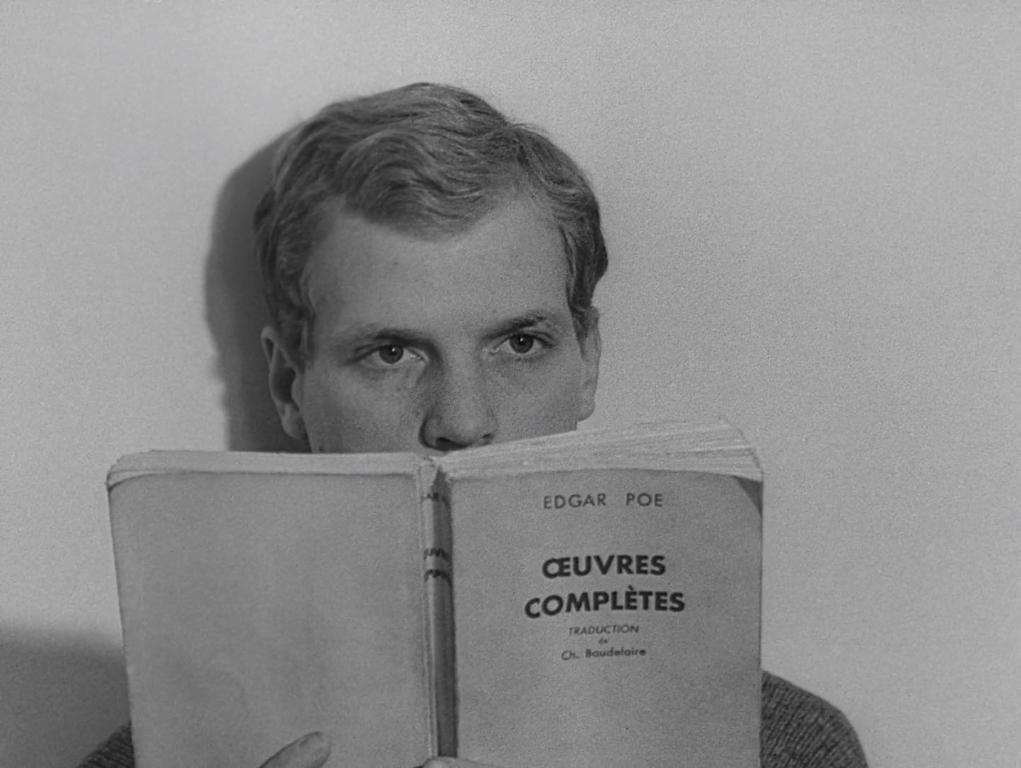
Nana dies at the end, ironically shot in turn by two pimps aiming at each other, but her trajectory all along has been a descent into poverty and prostitution, opposite to the progressive blossoming of life in Poe’s oval portrait. Her death, as if to stress its centrality, is echoed in the quoted works of Dreyer, Dumas, and Poe. The gunshots that kill her at the end of the twelfth tableau are forecasted in the equally abrupt gunshots that end the sixth, adding a layer of symmetry to the film. If Nana’s death stands for the negative work of the artist which Poe expresses so eloquently, that destruction is expressed with almost equal eloquence in a funny comment Nana’s husband recalls, apropos of nothing, in the first tableau. His father’s eight-year-old student had written: “A bird is an animal with an inside and an outside. Remove the outside, and the inside is left. Remove the inside, and you can see the soul.” Edgar Allan Poe and this child both describe how the artist finds the life in a subject – one renders it on canvas, the other removes its layers. Both are processes of abstraction which reveal the subject’s life at the cost of its actual life.
All of this clarifies Vivre sa vie‘s dedication (in its first frame) to B movies. The idea of a “B movie” is that it has no aspiration to become Art with a capital “A”. It’s typically a genre film, not made to win awards or earn high praise. No one would mistake Vivre sa vie itself for a B movie – it’s too evidently philosophical and doesn’t aim to entertain – yet it often descends into the register of a B movie. Nana occupies a world of cheap cafés and pool halls, brothels and peripheral streets, pimps and gunfire, advertising posters and jukeboxes, yet she often ventures into high culture: watching a silent art-house film, crossing the Place du Châtelet, conversing with a philosopher. At the record store she sells both classical and popular music. The gap between high and low culture is highlighted in the discrepancy between a cheap restaurant and its big mural of the Champs-Élysées. Earlier, when Nana first met Raoul, he had insulted her to test whether she was “a lady or a tramp”, and by laughing she proved herself a lady. In other words, despite Nana’s degraded circumstances, the film respects its subject at all costs. Godard will not be the foolish husband in Poe’s short story, demoting his living wife to second place. The point is not that Nana belongs rightfully to the upper class, but rather that Godard will not treat Nana, or vulgar art like B movies, as inferior to some sacred category of high art.
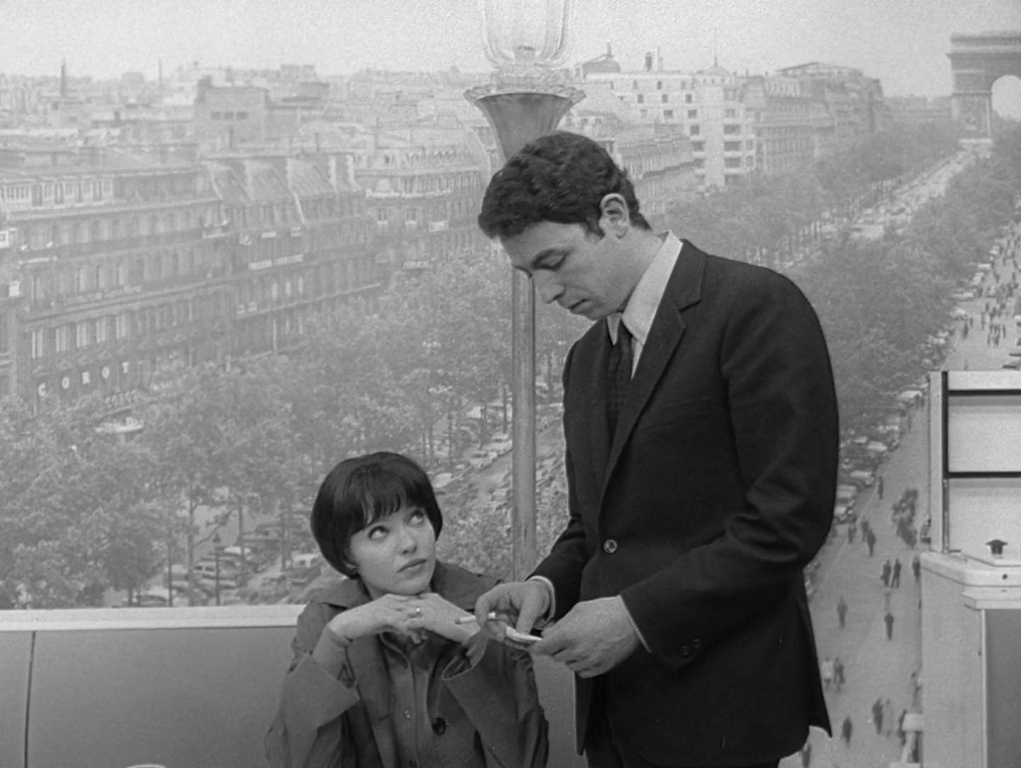
Godard’s work, however, is not entirely opposite to the artist’s work in “The Oval Portrait”. Nana has to be lifelike, the roundedness of her portrait more than an abstract metaphor. We’ll see her in happiness and sadness, at play and at work, likable and dislikable. Nana’s profession will commodify her, but a lively personality shines through when she dances in the pool hall or interviews real-life philosopher Brice Parain. Each tableau shows her through the lens of a different genre: melodrama, action, documentary, romance (her second meeting with Raoul ends in a kiss), musical comedy (Luigi’s balloon act and Nana’s dance in the pool hall), even pornography in the tenth tableau (glimpses of prostitutes in various sexual positions or stages of undress), and silent film in the twelfth (Nana and her lover speak in captions). Still, despite its variety and its “roundedness”, the movie does not pretend to be real life. True to the compulsive honesty that Godard had established in A Woman Is a Woman, the film keeps its artifice visible, never hidden too deeply. Nana’s story is told in fragments, as if to stress that we only know her in pieces.
“The Oval Portrait” is more than a horror story. It defines an artist’s dilemma – how to avoid the vanity of the painter who regards his work with the reverence due to a living being. The symbolic gesture of killing off Nana is not enough. It can’t work as a prescription for all films or all stories. The real solution is in the title, “to live one’s own life”. The artist must respect the subject’s independence. The title enjoins the artist to be modest, unlike the self-important painter who wishes to freeze his wife on the canvas, denying her an independent existence outside of his oval frame. The epigraph from Michel de Montaigne expresses the same idea, addressing the model instead of the artist: “Lend yourself to others, but give yourself to yourself.” The idea also emerges in the dialogue with Brice Parain, who argues that words and life have their own lives independent of each other.
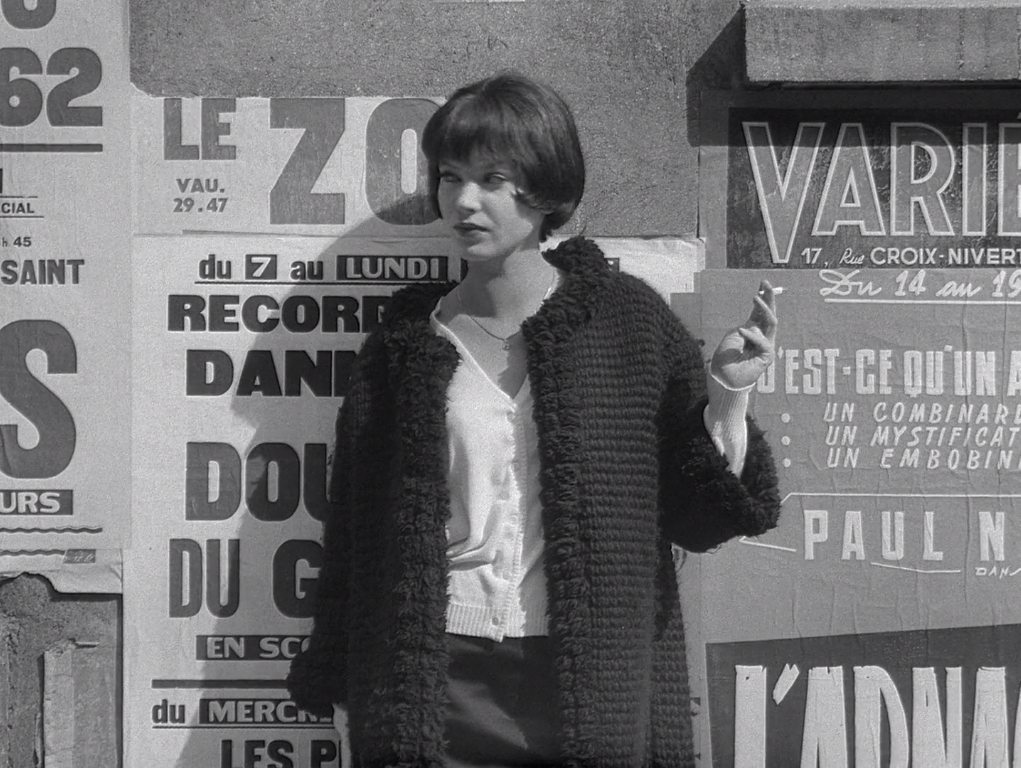
Five years later in Pierrot le fou, Godard will take exception to the idea of art itself, but the germ of the argument is already there in Vivre sa vie. It should be enough to make a good film, write a good story, or paint a good painting. As soon as anyone aspires to create “art” the act becomes tainted with pride. Instead of making something with a constructive purpose, the artist makes something to be worshipped. It’s telling that art museums are designed like temples. From the viewer’s perpective, the act of worshipping art interferes with seeing the work and benefiting from its insight. Critics who treat artworks as sacred objects tend to lose themselves in a muddle of adjectives as they measure the works to their nebulous standards. The notion of capital-A “Art” gives rise to a quasi-religious cult that distracts from the positive potential of creative work to sharpen people’s vision and improve lives.
In the final tableau, immediately after reading “The Oval Portrait”, Nana’s lover suggests they go to the Louvre, the highest of all temples of high art. Nana replies that she doesn’t like looking at pictures, but her lover, as if he’s learned nothing from Poe’s story, says that “Art and beauty are life.” Nana then goes to break off with her pimp Raoul, but he has other intentions, and she gets killed. Her last car ride, ironically, passes the Louvre. Having declined to go there with a romantic lover who placed art above life, she finds herself fated to pass it anyway, and it proves a harbinger of her own death. As they drive past she protests her degradation, having to take anyone who pays. The greatest irony is that the elevation of art simultaneously degrades it, turning it into a commodity. To place an artwork above life, making it more valuable than what it has to say, is the secular age’s form of idolatry.
CONNECTIONS:
Exit Smiling – Argument that life is more important than art
Vampyr – Argument that art for art’s sake drains life from the living
L’Atalante – Refusal of “high art”; idea that art should not drain the life from its subject
Orphée – Story of a man drawn into art at the expense of a woman’s life; critique of placing art above life
All About Eve – Warning against the elevation of art above life
Conflagration – Perversity of putting art on a pedestal at the expense of its subject
Winter Light – Parallel arguments about art and religion, that it’s idolatry to put the messenger above the message
Band of Outsiders – Link between art and death; oval portrait; Louvre; reference to B movies
Alphaville – Synthesis of widely perceived opposites; low culture put to a higher expression
Pierrot le fou – Critique of “art” as an object of misplaced reverence
I Knew Her Well – Episodic portrait of a doomed aspiring actress, with a lesson about art
Andrei Rublev – Reversal of connoted value in high and low; argument for bringing the idea of art down to earth
2 or 3 Things I Know About Her – Prostitution as a metaphor for the degradation of life
The Man Who Left His Will on Film – Idolatry of putting art above life
Diva – Argument for the independence of art’s subject and against the worship of art
Roselyne and the Lions – Correlation between art and lifelessness
The Wind Will Carry Us – Reversal of connoted value in high and low
LIST OF TABLEAUX WITH THEIR GENRES:
0:02:40 – Tableau 1 – melodrama
A café – Nana wants to give up – Paul – the slot machine
0:09:17 – Tableau 2 – formal realism
The record shop – two thousand francs – Nana lives her life
0:12:48 – Tableau 3 – historical period piece
The concierge – Paul – The Passion of Joan of Arc – a journalist
0:20:40 – Tableau 4 – crime
The police – interrogation of Nana
0:23:35 – Tableau 5 – social realism
The peripheral boulevards – the first man – the room
0:28:20 – Tableau 6 – action
Reunion with Yvette – a café in the suburbs – Raoul – machine gun fire outside
0:36:59 – Tableau 7 – romance
The letter – Raoul again – the Champs Elysées
0:45:52 – Tableau 8 – documentary
Afternoons – money – sinks – pleasure – hotels
0:49:54 – Tableau 9 – musical comedy
A young man – Luigi – Nana wonders whether she’s happy
0:57:11 – Tableau 10 – porn
The sidewalk – a guy – happiness is no fun
1:02:51 – Tableau 11 – intellectual theater
Place du Châtelet – the stranger – Nana does philosophy without knowing it
1:13:41 – Tableau 12 – silent
The young man again – The Oval Portrait – Raoul trades Nana